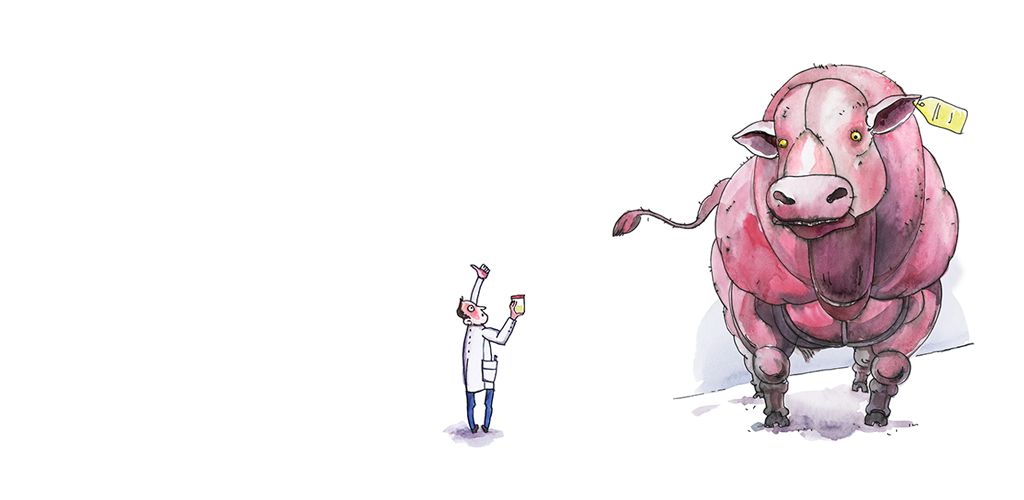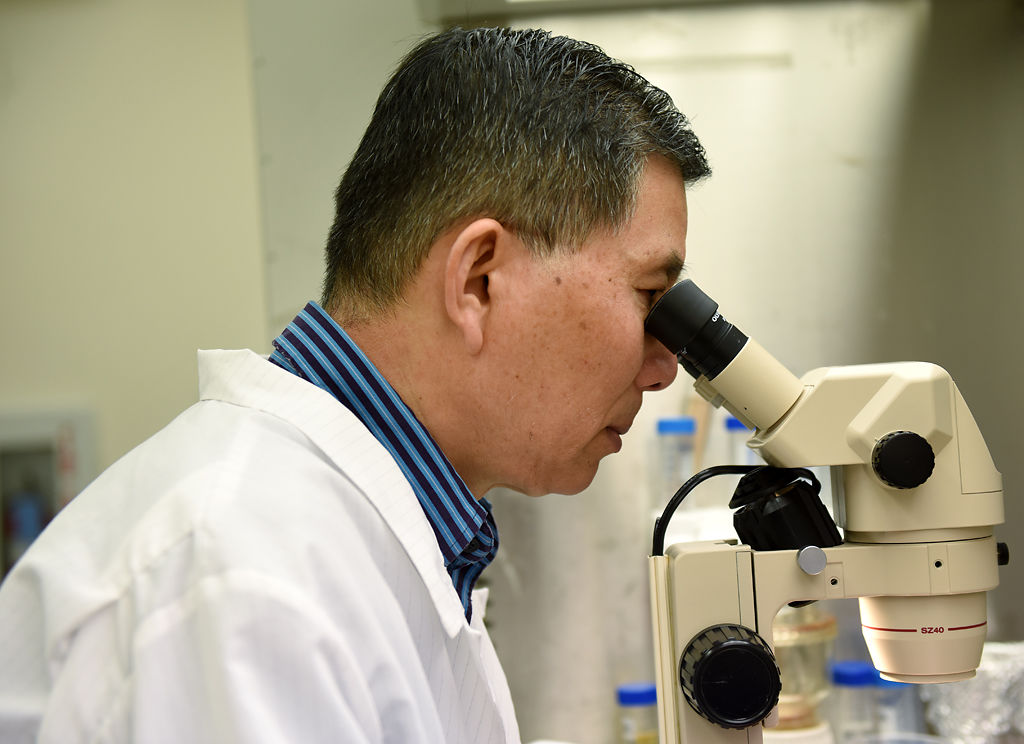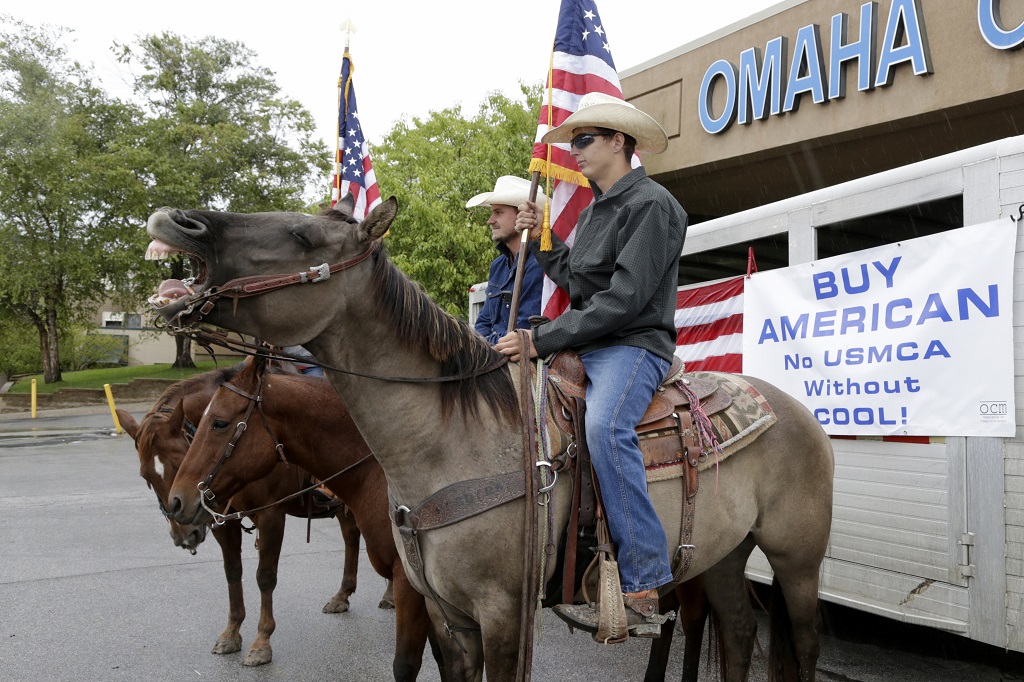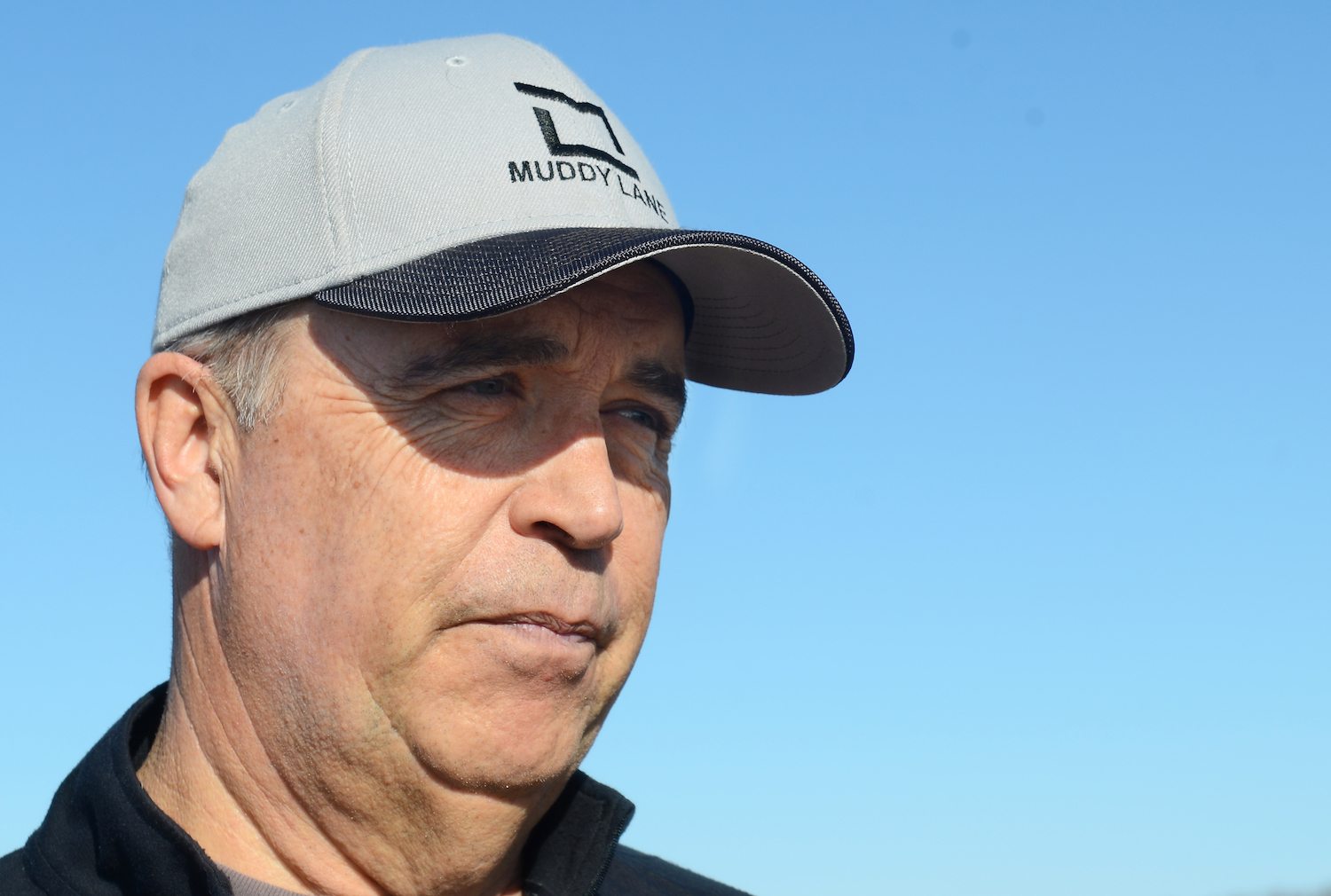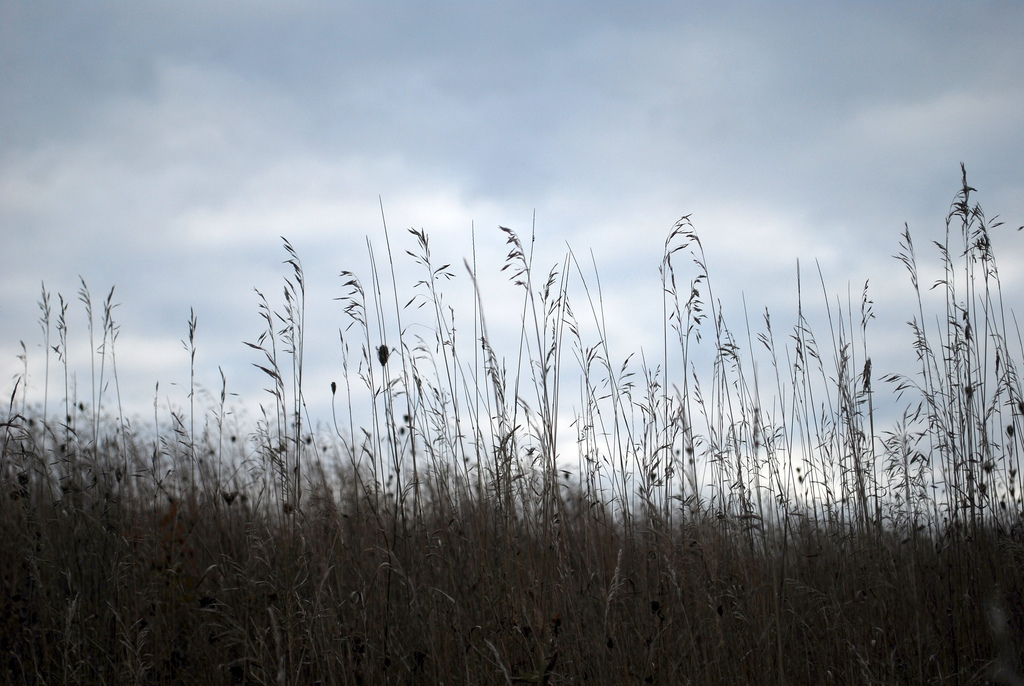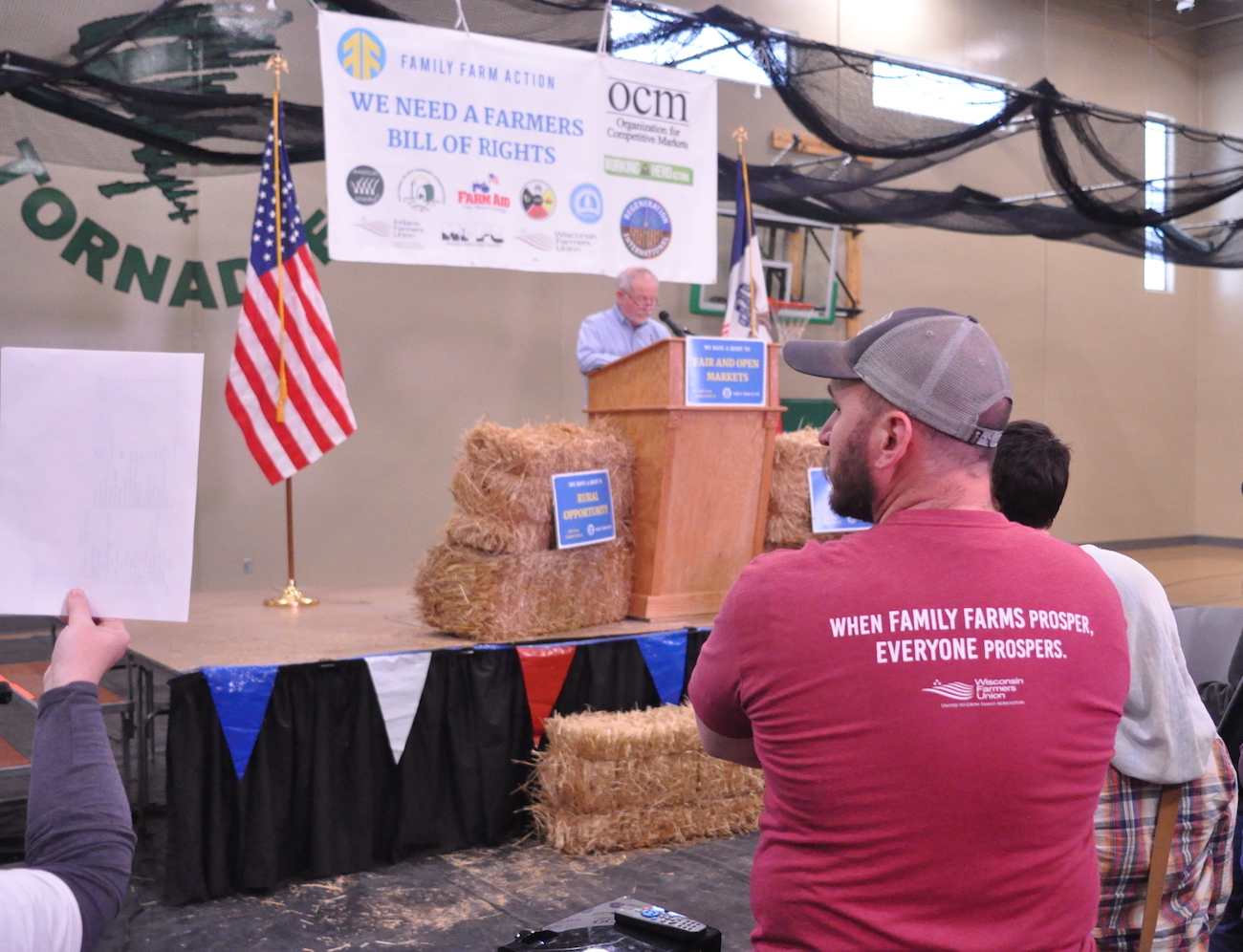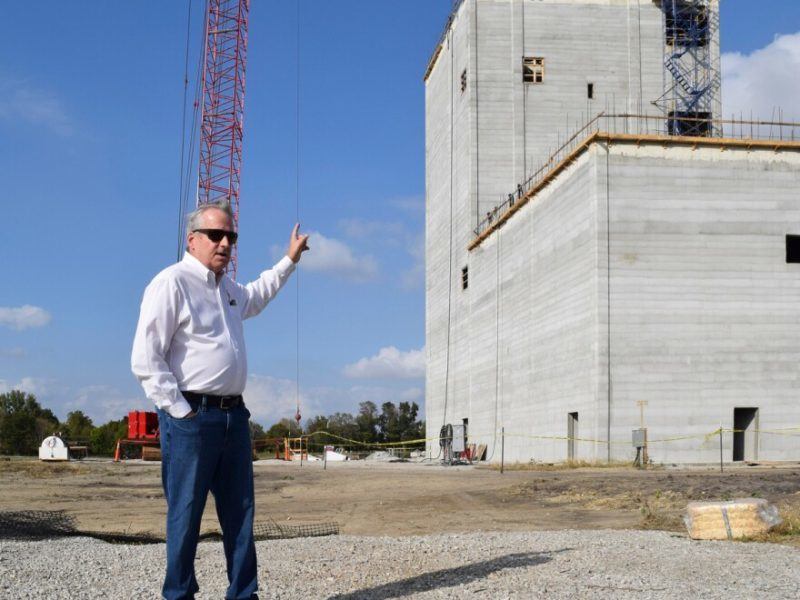
Katie Peikes/Harvest Public Media
From Iowa to Oklahoma to Kansas, universities are working more closely with agribusiness to pay for projects where tax dollars have become more scarce. Critics worry that agriculture schools might focus more on industry than the public interest.
Top image: Charles Hurburgh, an agricultural engineering professor at Iowa State University, stands at the site of the Kent Corporation Feed Mill and Grain Science Complex. The complex is expected to be completed in Fall 2022. It will make feed for livestock and train students who want to work in the feed and grain industry.
This story is a republished part of Big Ag U, a series by Harvest Public Media and Investigate Midwest on corporate influence at public universities across the Midwest.
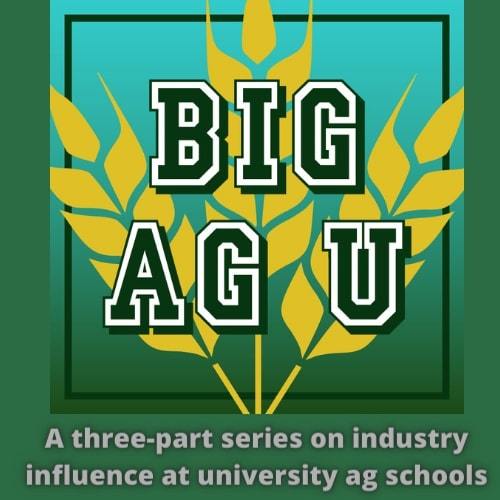
Iowa State University had its eye on building its own feed mill.
It would be a working operation, a chance to advance research on how to process corn grown across the state into animal feed. It would also double as a teaching center both for students on campus and for pros in the industry.
But first, the school needed upward of $20 million. University officials could have asked the state legislature for the money. But they knew they would be chasing funds that have decreased over the years and they’d fall in a long line of competitors.
So the university turned to the companies most likely to benefit from what that mill could offer.
That’s how the school ended up with the Kent Corporation Feed Mill and Grain Science Complex under construction now. Paid for without a dime from taxpayers.
Iowa-based Kent Corp., a big player in milling and livestock feed, won naming rights with the leading gift of $8 million. The Iowa Corn Promotion Board and Sukup Manufacturing Co., an Iowa-based company that makes grain storage and handling equipment, also gave large amounts for the project. Iowa State is still fundraising for the project.
“We realized that there was a strong possibility that we could get all of that funding raised through the generosity of private gift donors,” said Ray Klein, the director of the Office of Partnerships for the College of Agriculture and Life Sciences. “And that’s proven to be pretty much the case.”
Agriculture departments across the country find themselves in much the same spot and are adopting similar strategies to replace public money with private donations. That often steers them to donors with ties to agribusiness.
University officials could have asked the state legislature for the money. But they knew they would be chasing funds that have decreased over the years and they’d fall in a long line of competitors.
As lawmakers across the country began to cut deeply into tax subsidies for higher education, ag schools have turned increasingly to places where they could get private money — particularly wealthy alumni and companies eager to promote research, training and facilities likely to benefit their industries.
Harvest Public Media and Investigate Midwest found university officials working like sales teams to appeal to private donors and industry when they want new facilities to keep research afloat.
University officials say the shift comes as a nimble reaction to the evaporation of tax dollars that also helps train the next generation of workers in ways the agriculture industry needs. Critics say agribusiness donors effectively commandeer the research of public institutions toward the more narrow needs of industry.
Ag schools have turned increasingly to places where they could get private money — particularly wealthy alumni and companies eager to promote research, training and facilities likely to benefit their industries.
“My fear … is the corrupting of the sciences, on what research is produced,” said Austin Frerick, the deputy director of the Thurman Arnold Project at Yale University.
Private money makes sense for building projects, he said, but he worries that those funders might interfere with research.
“Not only what is produced,” Frerick said, “but what is not produced.”
‘It’s about making a profit’
Professors like Charles Hurburgh, who teaches agricultural engineering, hope to run the new Iowa State milling complex as a business and as a direct pipeline to the feed and grain industry.
“That’s one of the target areas that we want to meet is to be able to help those people get on-boarded into companies,” Hurburgh said. “And even existing staff of companies, bringing them up to speed with new technologies.”
The practice builds stronger relationships with the farm-related industries where many of the schools’ graduates will want to work, Kent Corp. and Iowa State officials said. Mike Gauss, the president of Kent Nutrition Group, said feed mill operators are aging out of the industry.
“Agribusiness as it stands right now, is not about the small farmer. It’s not about rural communities across Iowa, it’s about Wall Street.”
“And it’s important for Kent to really help to make sure that people are being trained, and we’re developing that workforce that is coming into those roles,” Gauss said. “One of the best ways to retain people is to make sure that people are coming into their roles with their eyes wide open and allowing them to have hands-on real world experience.”
Critics worry an overreliance on industry money steers research away from areas of broader public interest.
“Agribusiness as it stands right now, is not about the small farmer. It’s not about rural communities across Iowa,” said Emma Schmit, the Iowa organizer for the national advocacy group Food and Water Watch. “It’s about Wall Street. It’s about making a profit.”
Finding money
Kansas State University has a facility similar to the Kent Corporation Feed Mill and Grain Science Complex: The O.H. Kruse Feed Technology Innovation Center. The state of Kansas, the Kansas Bioscience Authority, the university and its agriculture college provided $10 million in funding for the new facility.
But Dirk Maier, who used to work at Kansas State and now serves as the director of the Kent feed mill at Iowa State, said the school “would have never been able to get a facility like that built without private funds.”
Public college funding had fallen more than $3.4 billion nationally between 2008 and 2019, according to an analysis by the Center on Budget and Policy Priorities.
Maier said projects at universities get funding based on priorities. Though the feed and grain industry is a high priority to the industry, it’s a lower priority when compared to other needs of a university. That, Maier said, is where the private money comes in.
Public college funding had fallen more than $3.4 billion nationally between 2008 and 2019, according to an analysis by the Center on Budget and Policy Priorities. The trend continues. Lawmakers in 27 states suggested cuts for fiscal year 2020 or 2021, according to the analysis.
“Even going into the pandemic, funding still remained well below pre-Great Recession levels in most states,” Michael Leachman, vice president for state fiscal policy for the center said. “And in many states, the funding cuts were severe.”
Oklahoma sits at the bottom of the state funding ladder. Between 2008 and 2019, state lawmakers cut higher education tax dollars by 35.3%. As a result of cuts in Oklahoma, average tuition at four-year schools grew by $2,153 between that period, according to the Oklahoma Policy Institute.
“The culture of higher education today is really based on the ability to bring investors to the table who have a private interest, whatever that may be.”
That’s also led to an increased demand for private funding. Most recently, big dollars have come from an Oklahoma State University alumni couple with ties to dairy giant Schreiber Foods. Larry Ferguson is a former CEO of the company.
The Ferguson Family Foundation donated $50 million for a new building on campus for the school of agriculture. The foundation also donated $2 million to help pay for a new dairy barn at the Ferguson Family Dairy Center.
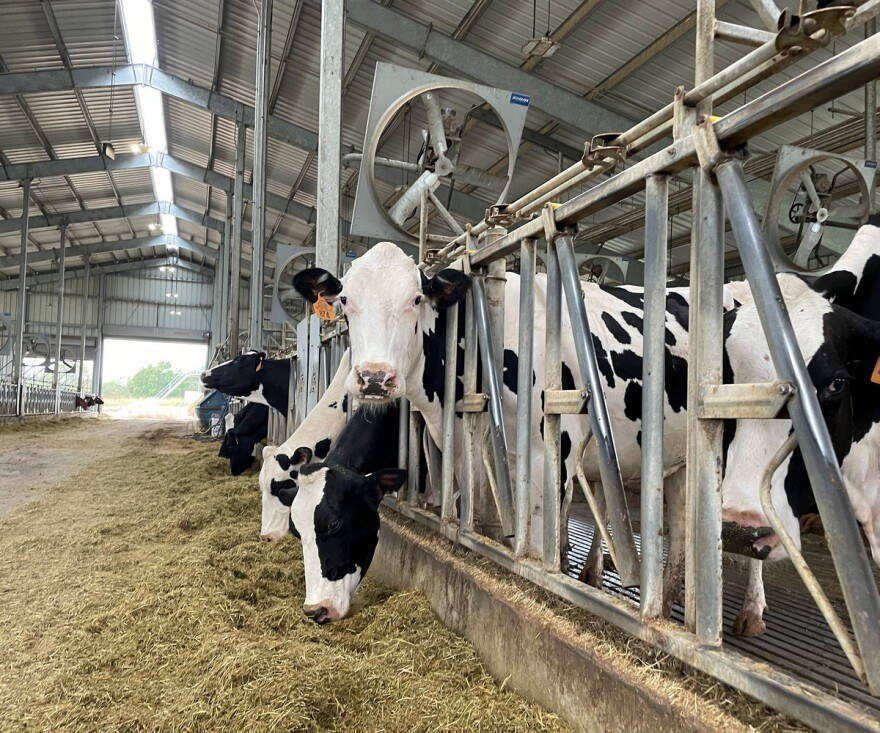
The new barn that houses cows at Ferguson Family Dairy Center at Oklahoma State University is thanks partially to a $2 million donation from the Ferguson Family Foundation. The foundation is made up of two alumni, Larry and Kayleen Ferguson with dairy roots. Larry Ferguson is the former CEO of Schreiber Foods. The couple also donated $50 million to fund a new building on campus with new classrooms, research capacity and a dairy bar.
Seth Bodine/Harvest Public Media
Tom Coon, vice president for agricultural programs at Oklahoma State, said private donations represent a shift in funding strategy for higher education.
“The culture of higher education today is really based on the ability to bring investors to the table who have a private interest, whatever that may be,” Coon said. “The way it works is, we’ve identified what our key needs are, where private funds could really make a difference.”
Failing facilities, new money
University agriculture departments across 97 universities have an $11.5 billion dollar backlog in repairs, according to a study released by the Association of Public and Land-Grant Universities. Peter Reeves, who works at Gordian and worked on the study, said investment money is going toward new buildings instead of addressing the backlog of repairs in old ones.
“What we ultimately are left with is this situation where, you know, we have aging out infrastructure that has been underinvested in for years,” Reeves said. “And the cost of waiting is starting to catch up with these campuses.”
Many researchers work in aging labs prone to breakdowns. Some researchers at Oklahoma State work in outdated buildings that haven’t been upgraded in decades. Plant and soil sciences professor Brett Carver spends his time breeding wheat inside greenhouses that were built in 1965.
“We’re trying to race or perform an Indy 500 in 2021 with a car that would have been manufactured in the (1960s),” Carver said. “We can soup up that car to maybe try to keep up, but we’re going to eventually pay the price for that.”
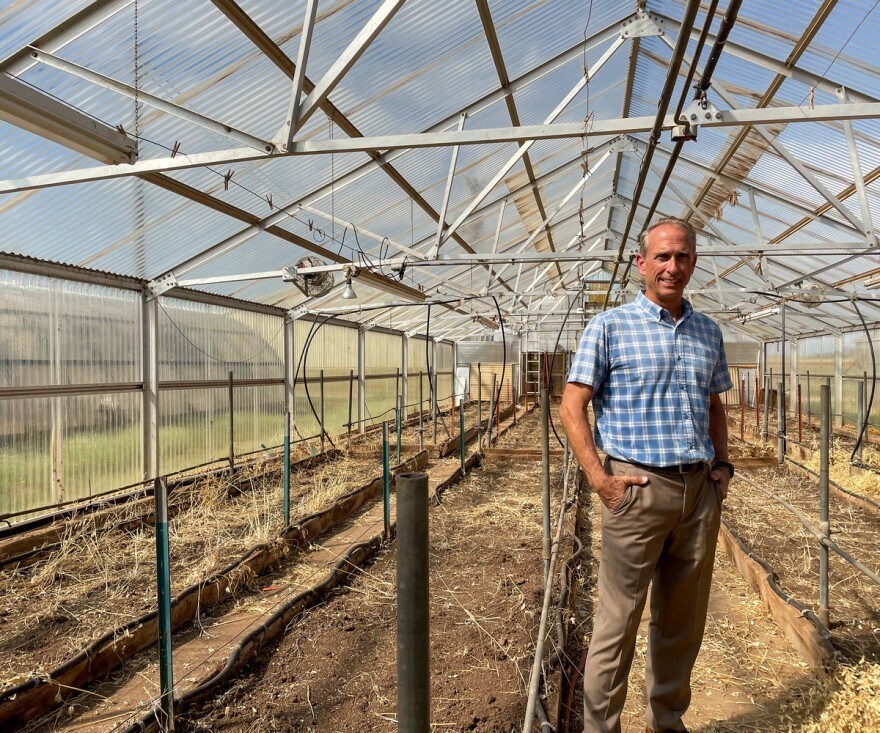
Brett Carver, a plant and soil sciences professor at Oklahoma State University, stands inside a greenhouse at the agronomy research station in Stillwater. Carver works in the greenhouses to breed wheat varieties. To do that, he has to test crosses between different varieties of wheat in order to get desired traits incorporated into a new variety. In February, a winter storm killed his wheat, setting him back up to a year in research.
Seth Bodine/Harvest Public Media
Last February, Carver’s team paid the price for the outdated greenhouses when the heaters couldn’t keep up with the severe winter temperatures. Carver said 30% of his wheat died. That could put him up to a year behind on his research into creating new wheat varieties tailored to Oklahoma growing conditions.
Carver said some aspects of the greenhouses, like dangling ceiling panels and duct-taped doors, can be replaced between seasons of use. But at some point, the repairs can feel like plugging holes in a sinking ship.
“We’ve done pretty good so far with the 10 fingers,” Carver said. “But we’re on the tenth finger right now — no fingers left to plug those holes.”
Amanda De Oliveira Silva, a small grains extension specialist at Oklahoma State who also spends some time in the greenhouses, said she needs to quarantine seeds she receives from around the world to follow U.S. Department of Agriculture guidelines to ensure no insects or diseases could tag along. She had to put nets on the windows like a Band-Aid to make sure the greenhouses are properly quarantined.
“We’re trying to race or perform an Indy 500 in 2021 with a car that would have been manufactured in the (1960s), we can maybe try to keep up, but we’re going to eventually pay the price for that.”
Randy Raper, the assistant director of the university’s agricultural experiment station, said there’s a plan to fund and replace the old greenhouses in the next five to seven years. That would take roughly $12-15 million, and he said the school is soliciting private and corporate partners to find the money, he said.
Yet professors like Carver worry about private money interfering with research meant to serve the public.
“It’s that obligation that you may have as a researcher to perform research that is of greater interest to the provider of the funds,” Carver said. “And that, just by itself, may cut off others who were not part of that funding stream. And as a public provider of genetic resources, I think we need to stay out of that situation.”
Carver said the wheat improvement team does get private donations, but they don’t prevent his research from being unbiased.
“They are not the kinds of sources … that would keep us at bay, or keep us obligated to a certain faction or certain segment of the industry. We’ve never had that problem,” Carver said. “And I don’t anticipate that happening.”
“It’s that obligation that you may have as a researcher to perform research that is of greater interest to the provider of the funds. As a public provider of genetic resources, I think we need to stay out of that situation.”
Oklahoma State denied Harvest Public Media’s record request for private donations made to the college, citing Oklahoma’s public records law that exempts universities from disclosing private or future donors.
Coon says 14.7% of the $60 million in research grants from 2019-2021 have been from private sources — 73.7% are from federal and 11.7% were from state agencies.
Of the private grants, some are corporate funders including BASF Corporation, Bayer and Elanco Animal Health, according to supporting documents from Coon. Others are nonprofit organizations such as the Foundation for Food and Agriculture Research, the Noble Research Institute and Oklahoma Wheat Research Foundation.
University officials like Coon said that state budget cuts are a tough adjustment, but they are finding a way.
“It’s not so different than in a business,” Coon said. “You know, we complain about losing some of our state funding, how that’s made things stressful but, you know, sometimes when you’re in private business, you know, you lose a big customer, or the price of natural gas goes up, and you have to figure it out.”
Harvest Public Media reports on food systems, agriculture and rural issues through a collaborative network of NPR-stations throughout the Midwest and Plains. Investigate Midwest is an independent, nonprofit newsroom covering agribusiness, Big Ag and related issues. Read Part 1 and Part 2 of this series. Read the original article here.


